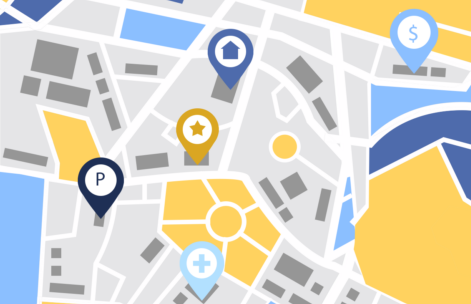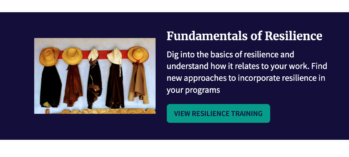With more than half of the world’s population living in cities, and with that number growing each year, it is clear that investing in urban resilience is key to sustainable development, especially in USAID partner countries where most of this rapid urbanization is taking place. Poorer populations in cities are particularly vulnerable to shocks and stresses linked to climate change, pandemics, conflict, rapid urbanization, migration, and other sources. Increasing the capacity of local and national governments and other stakeholders to plan for, mitigate, and adapt to the adverse impacts of disasters and climate change will save lives, reduce losses, and unlock economic and social potential.
USAID Urban Resilience Technical Guidance
To support the design and implementation of activities that strengthen the resilience of cities and urban communities, USAID has developed new guidance for programming across a variety of sectors in urban settings. The guidance provides evidence-based, practical recommendations, as well as building blocks representing cross-cutting approaches to strengthen the resilience of key urban systems. Complementing the main guidance are sector guides for Governance, Health, and Power, offering recommendations for applying an “urban resilience lens” to program design in these sectors, alongside strategies for integrated programming.
Approaches and actions to strengthen the resilience of cities and urban communities.
Main Technical Guidance
Opportunities to improve systems resilience and sustainable urban health outcomes.
Health Sector Guidance
Key governance factors that contribute to achieving urban resilience.
Governance Sector Guidance
Applying a resilience lens to strategic energy sector development.
Power Sector Guidance
USAID takes a systems-based, holistic approach to urban resilience that promotes sustainable, resilient solutions that integrate interventions in water, food security, economic growth, health, social cohesion and protection, education, climate change, disaster risk reduction and resilience, among others. The information below is drawn from the technical guidance, as well as related USAID and external sources, including the USAID Resilience Policy.
WHAT IS URBAN RESILIENCE?
Resilience is a continuous condition rather than a static state, and building resilience is a long-term effort of strengthening systems so they can adapt to current and future circumstances and changes, including responsiveness to evolving citizen needs.

Urban resilience refers to the ability of urban systems to mitigate, adapt to, and recover from shocks and stresses in a manner that reduces chronic vulnerability while positively transforming towards sustainable, equitable, and inclusive development.
Shocks and stresses include those from climate change as well as other sources such as rapid urbanization, pandemics, or conflict. Urban systems include people, communities, infrastructure, the natural environment, and cultures, norms, and policies in cities and towns.
Resilience focuses on strengthening the capacities that help people and systems to:
– absorb shocks by minimizing exposure to them and changing behavior to deal with the impact;
– adapt through measures that identify and manage risks over the longer term;
– transform as the underlying conditions are changed.
Read more about resilience on USAID’s ResilienceLinks website, and in the Building Resilience to Recurrent Crisis USAID Policy and Program Guidance.
The Urban Resilience Opportunity
Urban resilience efforts can guard against risks and help capture and safeguard benefits of urbanization for residents, especially the most vulnerable. Although the rapid growth of cities benefits billions through greater economic opportunity and access to services, those benefits are not distributed equally and risks, and hazards are also growing.

Urban resilience provides a framework to help cities address today’s problems while embedding a long-term vision that anticipates future risks. Urban resilience approaches enable achievement of a range of development outcomes through a focus on strengthening and better integrating urban systems, which can include communities, infrastructure, the natural environment, cultures, norms, and policies. Urban resilience goes beyond supporting cities in maintaining basic services (i.e., to simply stay afloat); and rather empowers cities to identify and prepare for risks and chronic stressors so that people and systems can more rapidly and equitably recover from disasters, and prepare for future risks.
Read more about resilience on USAID’s ResilienceLinks website and in the Building Resilience to Recurrent Crisis: USAID Policy and Program Guidance.
How to Strengthen Urban Resilience

USAID can improve development outcomes by strengthening urban resilience, either within stand-alone sectors or by integrated programming across sectors.
Based on global experience and best practice, USAID has developed the following cross-cutting “building blocks” that can be applied to integrated programming across sectors, as well as to sector-specific programming, to increase the resilience of urban systems:
- Inclusive Planning – Engage in participatory, evidence-based, regularly updated planning processes that account for future risk. This can include supporting inclusion of particularly vulnerable and typically left-out groups, an understandable and locally specific evidence base, and a transparent and robust consultation process with relevant communities.
- Governance – Strengthen the governance capacity of cities. This may include improving and enforcing land use, zoning and other plans and regulations; improving community engagement; and strengthening communication, transparency, and accountability.
- Finance – Unlock financial capital and budget for resilience. This often focuses on strengthening the financial management capacity of cities and helping them access the appropriate financial capital—both public and private—for the physical and social infrastructure needed to support resilience.
- Social Capital – Build and strengthen networks of relationships and bonds within and across communities. This may include redesigning public spaces to encourage interactions that build community among residents, or strengthening the capacity of civil society organizations, including those serving youth, women, local religious communities, and marginalized populations, to be aware of, and respond directly to, community needs.
- Natural Systems – Restore and protect the natural systems that contribute to resilience. This may include investments in open space, forests, biodiversity, and wetlands, both inside and outside of the city’s boundaries— that can provide protection from shocks and stresses.
Read more about the USAID’s Urban Resilience Building Blocks
Urban Resilience Resources
A set of curated resources and tools – both from USAID and external sources – related to strengthening urban resilience are available in the Urban Resilience Resources section.

In addition to the Urban Resilience Technical Guidance, other key USAID resources and tools related to strengthening urban resilience include:
Urban Resilience Learning Brief. This is one in a series of briefs developed based on emerging trends in urban spaces.
Policy and Program Guidance on Resilience. USAID’s Resilience policy articulates the Agency’s approach to resilience across sectors.
ResilienceLinks: The USAID Resiliencelinks website includes the Resilience 101 training course and other resources related to resilience and USAID’s work on building resilience in partner countries.
Climate Strategy . Climate action in cities cuts across all elements of the Strategy and will be critical for meeting immediate climate targets of the Strategy while investing in long-term systemic transformation.
For more curated resources visit the Urban Resilience Resources page.
To search all USAID resources related to urban resilience click here.
CONTACT US
A variety of units have technical expertise related to urban resilience, including the Environment, Energy and Infrastructure Center; the Democracy, Rights and Governance Center; the Resilience and Food Security Bureau; and regional bureaus like Asia Bureau. USAID’s internal Urban Resilience Working Group includes a variety of experts who are available to provide support at either the conceptual/design phase, or during implementation. DDI/EEI Green Cities Division serves as a focal point.
Please send your questions or request to:
- Monica Bansal, Green Cities Division Lead, at: mbansal@usaid.gov.
- Rebecca Chacko, Climate and Cross-sectoral Strategies, at rchacko@usaid.gov.

